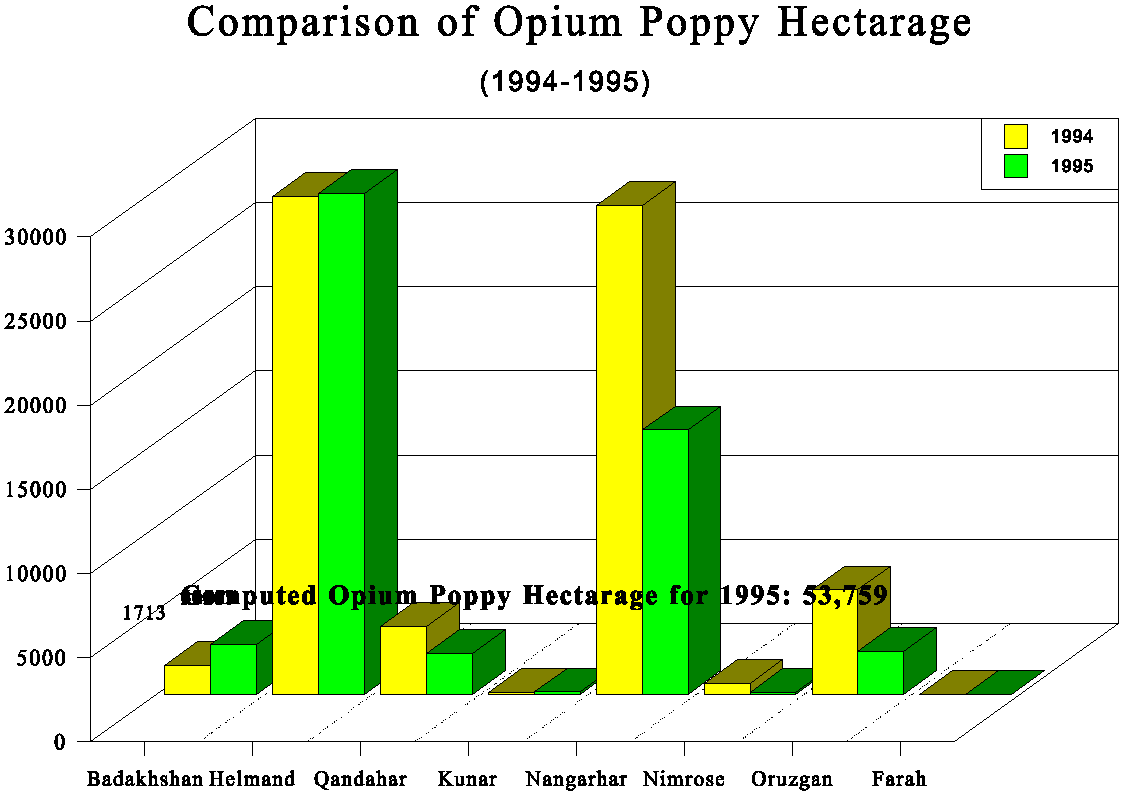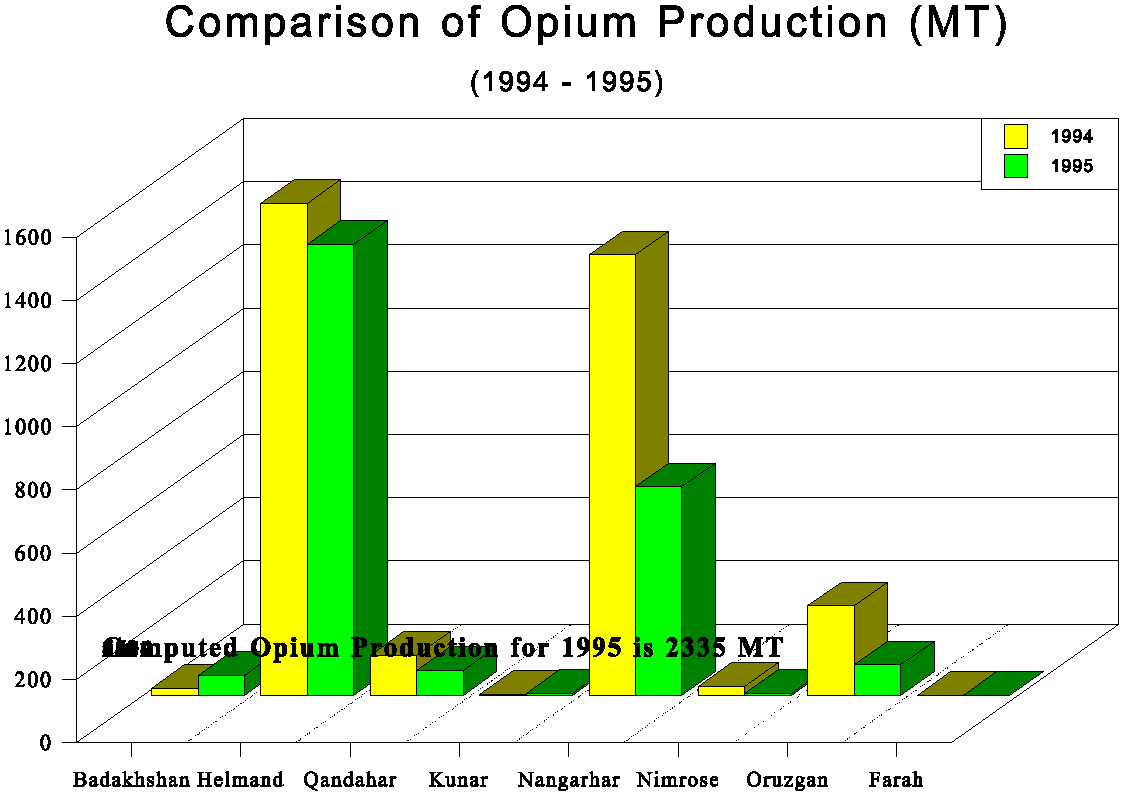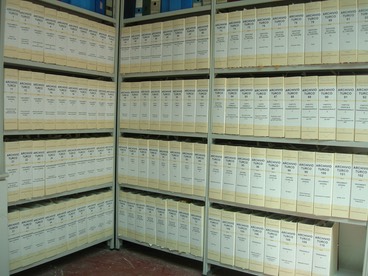EXECUTIVE SUMMARY
1995 Afghanistan Opium Poppy Survey
1. The second national comprehensive opium poppy survey for Afghanistan was carried out between March and July 1995 under the UNDCP-funded project "Monitoring of Opium Poppy Cultivation in Afghanistan" (AD/AFG/95-884). This Briefing Note presents the summary findings of this survey.
2. Findings are based on a methodology whereby 54 enumerators accompanied by 54 local guides surveyed the eight poppy growing provinces of Afghanistan. The enumerators were supervised by 16 field monitors who were monitored by field coordinators, the survey team leaders, and the Monitoring advisor.
3. UNDCP/ROSWA (Regional Office for Southwest Asia) and ADCRP (Afghanistan Drug Control and Rehabilitation Project) worked cooperatively in the five provinces where ADCRP is working, to improve data collection and survey implementation.
Survey results have been summarized as follows:
4. Provincial Opium yield for the 1995 growing seasons range from a low of 21 kg/ha of dry opium gum (= weight of fresh opium less 30%) in Badakhshan province, to a high of 48 kg/ha in Helmand province.

5. During the 1994/95 growing season between 53,000 and 55,000 hectares were estimated to have been under opium poppy cultivation (the computed figure in 53,759 Ha). The largest areas under opium poppy cultivation were found to be in Helmand and Nangarhar Provinces which accounted for approximately 85% of all opium production in Afghanistan during 1994/95.
6. The data on yields and areas under cultivation indicate a total production of 2,200 to 2,400 metric tonnes of dry opium gum in 1994/95 (the computed production in 2,335 mt).
Comparison of 1994/95 survey results with those of the previous year indicate that:

7. Overall production of opium in Afghanistan decreased by 32% between the 1993/94 and 1994/95 growing seasons. This decrease was attributed to enforced large-scale eradication in Nangarhar. In Nimroz it was attributed to lower market prices for opium as compared with high labour costs, increased market prices for wheat, and increased law enforcement efforts by the neighbouring Government of Iran. Higher wheat prices, and fear of reprisals by the Taliban forces (religious students fighting for political control) contributed to decreased production in Helmand, Uruzgan, and Kandahar. Badakhshan is the only province to have sharply increased its opium production by 164% (from 22mt to 61mt). Local addiction in Badakhshan and a newly emerging demand in Tajikistan and other Central Asian Republics offering high prices for the raw opium are the main factors contributing to this increase.
8. The use of fertilizer increase during the 1994/95 growing season, contributing to an overall increase in opium poppy cultivation costs.
9. The price of dry opium remained almost the same in local currency (Afghanis), though it increased 30% in dollar value. Oversupply in 1993/94 has resulted in lower prices. Dry opium from Badakhshan still fetches the highest price because of its superior quality.


